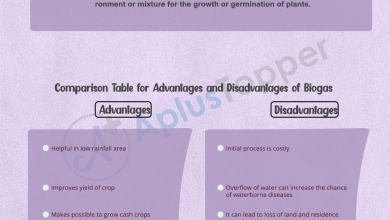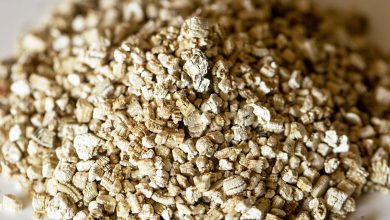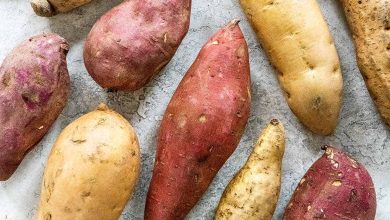Pests and Diseases of Bougainvillea: [Detection, Causes and Solutions]
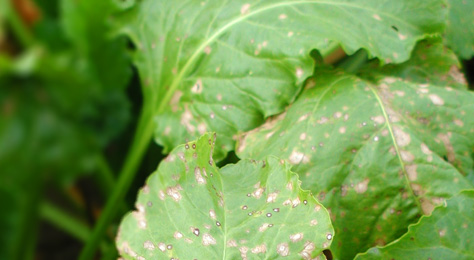
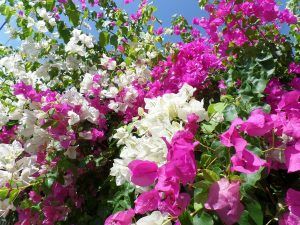 For those looking to enjoy a plant capable of flowering throughout the year , bougainvillea is the highest value option.
For those looking to enjoy a plant capable of flowering throughout the year , bougainvillea is the highest value option.
It is a climber that gives us beautiful flowers every time, blooming even in winter, when it is mild (without frost).
It is a species that requires little care and is quite adaptable, but it must be protected from attack by pests and diseases.
Do you want to know how to prepare yourself so that your bougainvilleas are always 10? Take note of the information we give you here.
Mealybugs
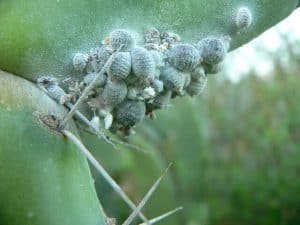 It is a pest that has a sharp part that manages to penetrate the most tender areas of the plant to suck the sap.
It is a pest that has a sharp part that manages to penetrate the most tender areas of the plant to suck the sap.
This suction results in small chlorotic dots appearing in the affected areas, by means of which it can be detected that something is wrong.
With this loss of sap, the plant begins to weaken.In addition, mealybugs produce a honeydew that adheres to the texture of the plant and where it is very easy for a disease called bold to develop.
Normally, it is generated when the environmental conditions are at a low level of humidity and the temperature is high.The good news is that it is very possible to combat it by cleaning the plant with a cotton pad and methylated spirits.
To avoid damage to the structure, afterwards it will be necessary to clean it with soapy water and carry out the respective rinse.
Most mealybugs are plant parasites, feeding on sap drawn directly from the plant’s vascular system.
Mealybugs vary greatly in appearance, from very small organisms (1-2mm) found under wax covers (some look like oyster shells), to shiny pearl-like objects (about 5mm), to creatures covered in wax. floury wax.
Mealybugs’ waxy coating makes them quite resistant to pesticides, which are only effective against the juvenile stage of the caterpillars. Over time, scale and mealybugs blacken the leaves with «sooty mold.»
natural control
- Identify mealybugs by looking on the undersides of leaves and around leaf seams. Mealybug-damaged plants have a shriveled, sickly appearance and may have sticky sap or a black fungus on leaves and stems.
- Move an infested plant to isolate it from the rest of your collection. Mealybugs are invasive and can infest other plants.
- Remove mealybugs with a twig or scraping tool. They will easily detach from the plant tissue.
- Wash infested plants with a mixture of soap and oil if scraping alone doesn’t do the trick. Mix ½ teaspoon of insecticidal soap and ¼ teaspoon of horticultural oil in 1 liter of warm water.
- Wash the leaves individually with the soap and oil mixture. Rinse well. There are also numerous chemicals available for mealybug control.
- Purchase and release a natural predator called Chilocorus nigritus or Lindorus lophanthae for heavy infestations. Place the insects directly on the infested plant. Once they have consumed the scale, the predators will simply die from lack of food in the interior environment.
- Spray with pyrethrin as a last resort. Pyrethrin is an organic pesticide made from chrysanthemums.
- Be consistent: Examine infested plants for evidence of new scale every day. It may take some time, but your bougainvillea will thank you.
snails and slugs
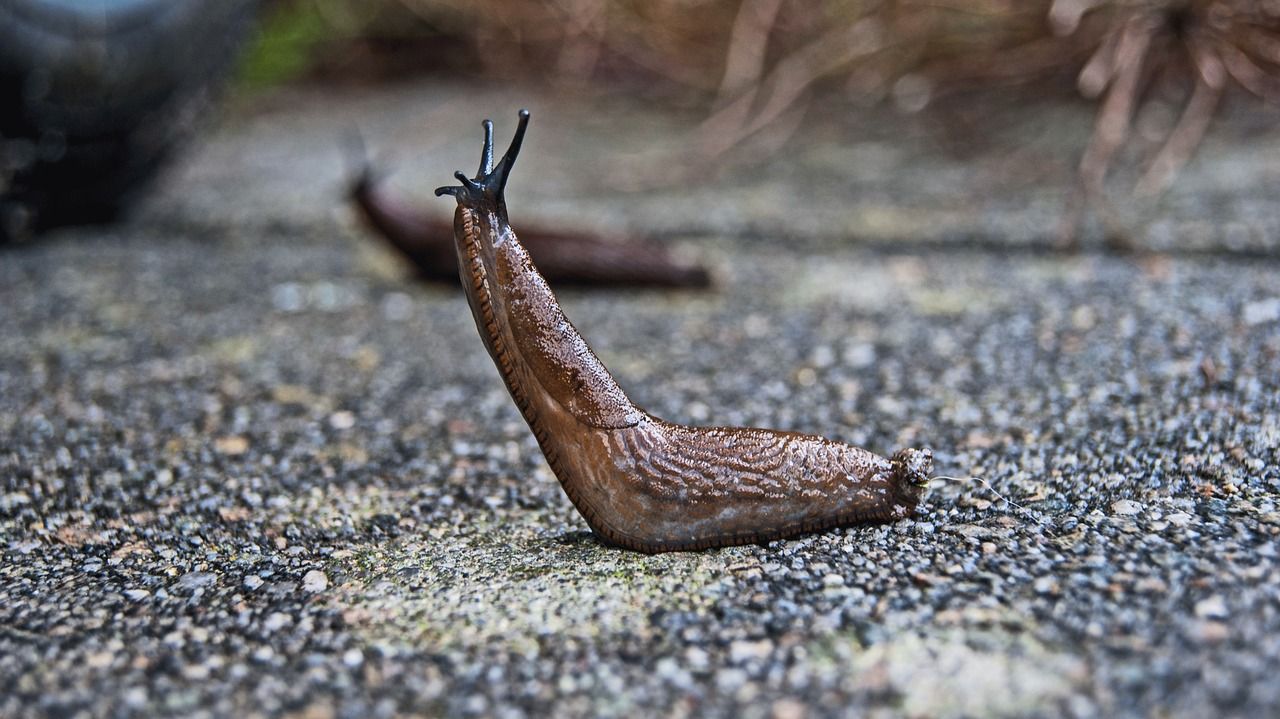
Snails usually eat from the center of the leaf, but they can also bite the edges.
All of this biting and stroking will make the leaf look scalloped. Putting up barriers that slugs cannot cross is perhaps the best way to protect your garden from these common pests.
Keep them out and you won’t have to use pesticides.
natural control
- Only water your garden early in the morning, or use an underground irrigation pipe. This will keep the top of the soil dry and it will be hard and annoying for slugs and snails to get around.
- Spread dry soot, dry ashes, dry lime, sharp ashes, and dry chalk around plants or flower beds. Any one of them, or several combined, should work.
- Rough, sharp sand is another option. Use it in the same way as the materials in step 2.
- Try calcified algae or crushed eggshells as a barrier. Another barrier material is prickly rose clippings or holly leaves. Rosa rugosa (Japanese rose) cuttings are good.
- Sprinkle pine needles in your garden (they also make good mulch for strawberries).
- Scatter clipped hair (human hair is good) in your garden.
- Try using oak leaves as a barrier. Slugs and snails do not like the tannin in the leaves.
chemical control
Any brand of slug/snail swatter will do the job.
bougainvillea worm
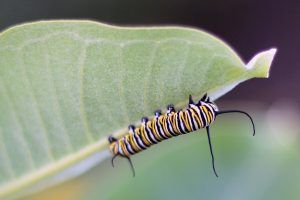 The bougainvillea can suffer from losses in its leaves because certain pests are responsible for consuming them, as in the case of the bougainvillea worm.
The bougainvillea can suffer from losses in its leaves because certain pests are responsible for consuming them, as in the case of the bougainvillea worm.
They are small caterpillars of different colors that maintain a nocturnal life and whose food source is the leaves, which they begin to consume from the edge.
At first glance we will notice changes in the structure of the plant and we will have the opportunity to act.But if it is not done, it could consume all the leaves little by little until it is left with nothing.
These worms can be removed by picking them up with your hands and a glove , but since they carry a nocturnal worm they could be difficult to see.Another technique is to use an insecticide that has the necessary components to deal with this pest.
Mildew
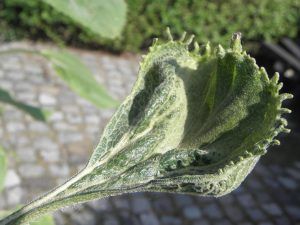 Downy mildew is a common disease in fruit and ornamental crops and bougainvillea is not exempt from it.
Downy mildew is a common disease in fruit and ornamental crops and bougainvillea is not exempt from it.
Its action occurs on the leaves causing the appearance of yellow or brown spots on the front.
If we look at the back, spots will also be noticed but this time silvery, which are formed by the action of the fungus mycelium.
It is usually a disease that attacks ideally in spaces where humidity and temperature are high.Therefore, the first step to prevent its appearance is to place the bougainvillea in a clear space, where there is sufficient air circulation.
When noticing changes in the plant that are comparable to the symptoms described here, the first thing to do is to remove the affected leaves and burn them.Then it will be time to apply a fungicide that helps prevent the attack from continuing or a new one from being generated.
aphids
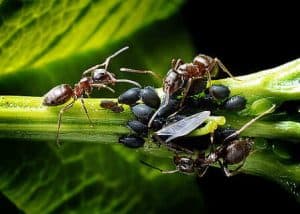 Aphids are small insects that usually attack in groups, locating themselves on the back (or underside) of the leaves.
Aphids are small insects that usually attack in groups, locating themselves on the back (or underside) of the leaves.
Depending on the species, they can be presented in different colors, but the most usual is that they have a green hue similar to the leaves they attack.
The action of this plague occurs by subtracting the juices from the plant , causing a forced weakening of the entire structure.At the same time, they secrete a syrupy substance that serves as a base for the settlement of fungi, especially bold.
When dealing with them, there are different modalities, the simplest and least harmful being spraying the plant with a strong jet of water that will drive them away.Another method is to wash the plant with a mixture of water, dishwashing soap, and cooking oil.
natural control
- Examine your garden regularly for signs of aphids. Look for groups of these tiny insects on new growth and on curly, twisted leaves.
- Wearing gloves, remove aphids by hand, or use a sharp stream of water to dislodge them from the plant.
- Cut and remove infested foliage.
- Capture flying aphids by placing yellow sticky traps near infected plants.
- Prepare a non-toxic pesticide by mixing 1 cup of vegetable oil with 1 tablespoon of liquid dish soap. Add 1½ teaspoons of the solution for every cup of hot water to a hand spray bottle.
- Hit the aphids directly with the above mixture and spray the entire plant thoroughly.
- Introduce beneficial insects, such as ladybugs/crab/beetles, or green lacewings, to your garden to feed on the aphids. Both can be purchased at garden stores or online. Avoid planting bougainvillea near plants that attract aphids, such as birch trees, and instead grow plants such as white sweet clover, spearmint,
- sweet fennel and Queen Anne’s lace, which attract and harbor lacewings, ladybugs and other insects that feed on aphids.
- Eliminate ants from your garden. Ants love to eat the sugary sap (honeydew) secreted by aphids, and will «grow» the aphids, protecting them on the plant they eat.
White fly
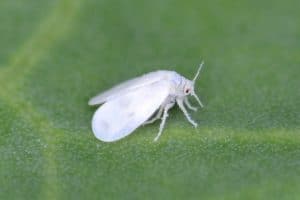 The whitefly is responsible for consuming the sap of the youngest parts of the plant, but it also causes damage by laying its eggs on the structure.
The whitefly is responsible for consuming the sap of the youngest parts of the plant, but it also causes damage by laying its eggs on the structure.
Similar to the cases of cochineal and aphids, the whitefly is also capable of secreting honeydew where it is possible for the bold fungus to settle.
In low quantities they do not cause major complications, but when it is an abundant pest, it is best to apply a corrective action.For this, biological action is one of the possible alternatives with natural predators of this species.
If this is not feasible, it will be necessary to resort to the support of chemical products.
powdery mildew
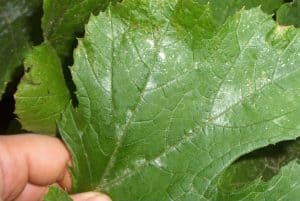 It is a disease that occurs due to the attack of a fungus that produces a white spot-like layer on the leaves.
It is a disease that occurs due to the attack of a fungus that produces a white spot-like layer on the leaves.
The most common is that its attack begins in the youngest leaves and stems and then spreads throughout the rest of the plant.
This layer of fungus causes the leaves to turn yellow, drying and then irremediably falling from the plant.Powdery mildew is produced as a result of excessive humidity in the plant, so it is necessary to be careful when watering to avoid wetting the structure.
When the attack is not very strong, it is best to remove the affected areas of the plant and burn them.If a product needs to be applied, horsetail plant extract or a sulfur-based mixture may work well.
Red spider
It is a tiny pest that is capable of attacking bougainvillea when the environment in which it grows is very dry.
The action of the spiders creates yellow dots on the leaves that then darken to brown.
In the last phase, instead of looking like part of the leaf, the spots look like dust, causing the leaves to dry out and fall off .
Plague control can be exercised by cleaning the leaves, when the effects caused are few, or with chemical action in more chronic cases.
The presence of spider webs is an easy way to distinguish them from other types of mites. The mites cause damage by sucking the cellular content of the leaves.
Small numbers of mites are not usually a cause for concern, but very high populations—high enough to show visible leaf damage—can be detrimental to plants. At first, the damage appears as a stippling of light spots on the leaves; sometimes the leaves take on a bronze color.
As feeding continues, the leaves turn yellow and fall off.
Leaves, twigs, and fruit are often covered with copious amounts of cobwebs. Damage is usually worse when water stress worsens.
Check the undersides of leaves for mites, their eggs, and spider webs; you will need a magnifying glass to identify them.
To get a closer look, shake a few off the surface of the leaf onto a sheet of white paper. Once disturbed, they will move quickly. Make sure mites are present before treating them. Sometimes the mites will be gone by the time you notice the damage; the plants usually recover when the mites are gone.
natural control
If treatment against mites is necessary, use selective materials, preferably insecticidal soap or insecticidal oil. Petroleum-based horticultural oils or neem oils are both acceptable.
Oils and soaps must come into contact with mites to kill them, so excellent coverage is essential, especially on the undersides of leaves, and repeated applications may be necessary.
Mid-season flushing to remove dust can help prevent serious late-season mite infestations. Regular and vigorous spraying of plants with water usually adequately reduces the number of spider mites.
Make sure you get good coverage, especially on the undersides of the leaves.
chemical control
Mites often become a problem after the application of insecticides.
These outbreaks are usually the result of the insecticide killing the mites’ natural enemies, but they also occur when certain insecticides stimulate the mites to reproduce. The best method is to control mites naturally.
bougainvillea caterpillar
The bougainvillea caterpillar is a green or brown caterpillar about 2.5 cm long.
Also called inchworm or inchworm. The caterpillar larva blends in very well with stems and branches and feeds mainly at night, so you may see the damage but not find the culprit on the plant.
In adulthood, we can observe a moth, it is a very fast flying insect with a wingspan of about 2.5 cm.
The moth does not feed on foliage. Like the larva, it is also active at night, when it is believed to lay its eggs on the undersides of bougainvillea leaves. Go exploring very early in the morning or at night if you have a good strong flashlight.
The bougainvillea bug feeds on the edges of leaves, causing severe scalloping of the foliage. Attacks begin on young, tender shoots and leaves, before progressing up the stem.
The insect causes significant visual damage to bougainvillea, although it does not appear to kill the plants.
chemical control
Neem oil should be a good solution and it should be effective on loops without harming other insects that may biologically control them.
Insecticidal oils and soaps will not control caterpillars such as the warbler. Most synthetic insecticides labeled as allowing use against caterpillars on ornamental landscape plants will likely kill bougainvillea warblers, although these products are often destructive to beneficial insects as well.
It is recommended to spray insecticides in the late afternoon.
This is the time when adult bougainvillea caterpillars and moths are active, and also when beneficial insects are not usually active.
Leafminers: Moths, flies, beetles and wasps

The vast majority of leafmining insects are moths (Lepidoptera) and flies (Diptera), although some beetles and wasps also exhibit this behavior. Although the types of insects differ, the damage they cause is very similar.
For this reason, the larval stages of all leaf-mining insects are collectively and generically called «miners.» All leafminers cause leaves to appear skeletal and fall off the plant. In the end they can kill the plant.
natural control
Cleaning around the plant is the best solution.
Like wood borers, leaf miners are difficult to control, protecting themselves from insecticide sprays and from plant defenses by feeding within the tissues of the leaves themselves.
Some leafminers can be killed by systemic pesticides (a type of pesticide that travels within the plant after absorption), but many breeds remain immune to the effects of pesticides.
Debris tends to accumulate at the base of plants, and this is where adult leafminer larvae lay their eggs. Some leafminer larvae may also «winter» in these remains. Removing leaves and other debris from around plants is an excellent method of controlling them.
Weeding provides an alternative food source for leafminers, so areas around plants should be weeded and mulched.
Do not use contact pesticides.
Because the leafminer is inside the leaf, contact poisons cannot reach it and therefore cannot kill it. In addition, the larvae of the leafmining insects quickly become resistant to contact pesticides.
thrips

Thrips are tiny, spindly insects with fringed wings that cause discoloration and deformities in bougainvillea and other plants. Other common names for thrips are thunder flies, thunder bugs, storm flies, and corn lice.
Thrips are usually tiny (1 mm in length or less) and are not good fliers, although they can be carried long distances by the wind. Thrips feed by piercing plant cells with their paired maxillary stylets, which form a feeding tube.
Due to their small size, cryptophilic behavior and high reproductive rate, thrips are difficult to control by classical biological control.
Only two families of parasitoid Hymenoptera are known to hunt them, the Eulophidae and the Trichogrammatidae.
Common diseases and problems
Fungal and bacterial leaf spot (Pseudomonas and ropogonis)

The first symptoms are small, reddish-brown leaf spots that usually appear on younger foliage and give the leaves a «rusty» appearance. These enlarge to become dark, circular or irregular necrotic spots.
When environmental conditions are drier and less favorable, leaf spots develop more slowly. The lesions have a tan center surrounded by a dark reddish-brown margin, and are sometimes bordered by a chlorotic halo.
Over time, the leaf edges may become ragged as the necrotic tissue becomes dry and mushy. In conditions of high rainfall or relative humidity, lesions develop rapidly and are often black and lined by veins.
- Infection of developing leaves and bracts results in puckered and distorted growth.
- Defoliation will occur when leaf spot, blight or marginal necrosis is severe.
- Keeping the foliage dry is the main control measure.
- Prune the branches back and away from each other or, if they are just starting to grow, leave a large space between them.
- Overlapping branches cannot dry quickly and become more susceptible to leaf spot disease. Remove infected leaves and/or plants from the growing area.
- Get rid of them immediately to reduce the spread of infection.
- Spray fungicide in spring if necessary.
- It will not cure the infection that already exists, but it can control its spread. In frost-free climates where bougainvillea is perennial, disease incidence decreases during cool and/or dry weather.
black mold and soot
Problem stemming from over watering, under watering, low light levels or cold temperatures.
leaf spots
The appearance of yellow or tan spots on older leaves can be a sign of magnesium deficiency (common in yellow bougainvillea varieties), or from over-watering.
root rot
Plants overwatered or subjected to waterlogging conditions can develop root or stem rot. Easily prevented by careful handling and application of a broad-spectrum fungicide dip during transplanting or garden planting.
Yellowing or chlorosis in new shoots
It is often the result of a magnesium or iron deficiency, and an application of a complete micronutrient mix should help, but beware: too much Mn or Fe will cause a secondary deficiency, as the plant cannot absorb one when the other is present at elevated levels.
Yellowing or chlorosis in old shoots
It is often the result of a lack of magnesium or iron.
Apply Epsom salts at 1-2 teaspoons as a soak or foliar spray.
Signs of deficiencies in Bougainvillea
- Nitrogen deficiency: Older leaves turn pale green and the veins are usually reddish. New growth is stunted.
- Phosphorus deficiency: The veins will turn red to purple and the plant as a whole will have a purplish appearance.
- Potassium deficiency: Causes the edges of older leaves to be purple and the tips of the leaves to be brown.
- Magnesium deficiency: Appears first on older leaves, where they turn yellow or tan.
- Zinc deficiency (rare): It will look almost similar to magnesium, but in this case the leaf will be twisted.
- Iron deficiency: Young growth is stunted and pale; you will know it is iron if the leaf veins are still green.
- Calcium deficiency: Dead spots appear on young growth and the tips die soon.

